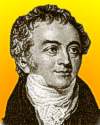
On 13 Jun 1773, English physician, physicist and Egyptologist was born. If you've taken a physics class, his name probably came up, though without much fanfare.
And yet he has been called one of the greatest minds since Isaac Newton. His breadth of knowledge was almost all-encompassing. In fact, it was said that if he learned something about law, he'd know a little about everything!
Even if you know his name, you probably did not know he started as a physician (M.D.). The biography of Thomas Young from Harper's Magazine (1890) reveals a fascinating man, and is another example of an article you read—and then come away wondering how you could have known so little before about a scientist who had made such significant contributions.
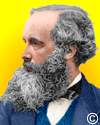
On 13 Jun 1831, James Clerk Maxwell, a Scottish physicist was born. His name is so well-known you, because he is one of the giants in his work on electromagnetic fields. Maxwell bridged the gap between Newton and Einstein. Today's book pick is: , by , who writes a biography of this remarkable scientist, known for approaching science with a freshness unbound by convention or previous expectations. He produced some of the most original scientific thinking of the nineteenth century — and his discoveries went on to shape the twentieth century.
It is available from Amazon, typically about (As of earlier time of writing - subject to change.)
 | All the mathematical sciences are founded on relations between physical laws and laws of numbers, so that the aim of exact science is to reduce the problems of nature to the determination of quantities by operations with numbers. |
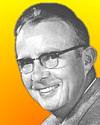 | All the good experimental physicists I have known have had an intense curiosity that no Keep Out sign could mute. |
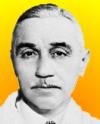 | The study of the serum of immunized animals forms a new chapter in the history of the struggle between the animal and infective agents, under which heading practical results of the highest importance are already inscribed. Any explanation of the phenomena is, however, still far from complete. |
| Before you look at today's web page, see if you can answer some of these questions about the events that happened on this day. Some of the names are very familiar. Others will likely stump you. Tickle your curiosity with these questions, then check your answers on today's web page. | |
| Births | |
 | James Clerk Maxwell, a Scottish physicist and mathematician, was born on 13 Jun 1831. His researches united electricity and magnetism into the concept of the electro-magnetic field. The four partial differential equations, now known by his name, first appeared in fully developed form in Electricity and Magnetism (1873). On what evidence did he proposed that the phenomenon of light is an electromagnetic phenomenon? |
 | Thomas Young, English physician, physicist and Egyptologist, was born 13 Jun 1773. His study of the interference of light reinforced the wave theory of light. A modulus of elasticity is named after his work with elasticity. Which Egyptian hieroglyphs did Young help decipher? |
| Deaths | |
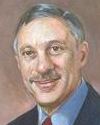 | James B. Pollack died 13 Jun 1994. He was a NASA researcher, who helped develop the theory that atomic war would result in a “nuclear winter.” He modelled the early evolution of the giant gas planets. He discovered the first real evidence that the clouds of Venus are composed of acid. Which acid did he find in the clouds of Venus? |
 | Freidrich Earnst Dorn (1848-1916) was a German physicist who followed Madame Curie's discoveries with his own study of radioactivity and discovered that radium not only emitted radiation, but released a gas that was also itself radioactive. The experiment provided the first clearly demonstrated example of one element transmuting to another through the process of releasing radiation. What radioactive gaseous element did he discover? |
| Events | |
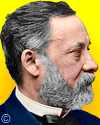 | In 1877, Louis Pasteur began his quest to develop a vaccine for a certain disease by visiting the slaughterhouses of Chartres to take blood samples from corpses of farm animals that had died of this disease. For what disease did he seek to prepare a vaccine? |
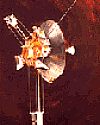 | In 1983, space probe vehicle Pioneer 10 crossed the orbit of a ceratin planet, a landmark event in its travel across the Solar System. Which planet orbit did it cross, and why was it a landmark event? |
Fast answers for the previous newsletter for June 12: radio waves • John Augustus Roebling • bees • the study of rock minerals by viewing thin slices of rock under a microscope • Gossamer Albatross • the walking gait of individuals, to distinguish between actual and spurious limps in damage claims for injuries • the decade including the year 1913.
 If you enjoy this newsletter, the website, or wish to offer encouragement or ideas, please send feedback by using your mail reader Reply button.
If you enjoy this newsletter, the website, or wish to offer encouragement or ideas, please send feedback by using your mail reader Reply button. Your click on a Facebook, StumbleUpon, or other social button on the site webpages is also a welcome sign of appreciation. Thank you for using them.
© This newsletter is copyright 2020 by todayinsci.com. Please respect the Webmaster's wishes and do not put copies online of the Newsletter — or any Today in Science History webpage. (If you already have done so, please remove them. Thank you.) Offline use in education is encouraged such as a printout on a bulletin board, or projected for classroom viewing. Online, descriptive links to our pages are welcomed, as these will provide a reader with the most recent revisions, additions and/or corrections of a webpage. For any other copyright questions, please contact the Webmaster by using your mail reader Reply button.
--
If you do not want to receive any more newsletters, Unsubscribe
To update your preferences and to unsubscribe visit this link
Executive Real Estate Business Class
-
"It was like a man with wings. It wasn't like anything you'd see on TV or in a monster movie." ...
About the publisher
Search This Blog
Blog Archive
-
▼
2020
(1542)
-
▼
June
(193)
- TRAVEL: Epic America—Our photographers' picks
- On This Day for June 30 - Night of the Long Knives...
- Newsletter for Tuesday 30 June.
- We told you: Mass-Tracking COVI-PASS Immunity Pass...
- June 30: Theory of Evolution, the Night of Long Kn...
- HISTORY: And the symbols come tumbling down
- Explore the Ocean with Nat Geo Kids Magazine
- New This Week on History News Network
- On This Day for June 29 - London's Globe Theatre d...
- Newsletter for Monday 29 June.
- COVID Cartoon Night (not funny) while we weep for ...
- June 29: Shakespeare's Globe Theatre Burns Down an...
- FAMILY: Getting your kid to help others
- Henry VIII's surprising burial place | The world's...
- On This Day for June 28 - Assassination of Archduk...
- Say the wrong thing: lose visitation with your kid...
- Newsletter for Sunday 28 June.
- June 28: Franz Ferdinand Assassinated, the Treaty ...
- The Compass: Kenya
- How the Invention of A/C Changed US Politics
- On This Day for June 27 - Yen made official moneta...
- Newsletter for Saturday 27 June.
- June 27: 1st Women's Magazine, Nuclear Power Stati...
- CORONAVIRUS SPECIAL EDITION: The virus hasn't won ...
- PHOTOGRAPHY: A legendary photographer's enduring r...
- Partner: How to keep your kids learning vocab this...
- Archaeologists Say They've Just Solved The 400-Yea...
- The Roundup Top Ten From History News Network
- On This Day for June 26 - Opening of CN Tower, Bab...
- Newsletter for Friday 26 June.
- Contact Tracer warns of forced vaccinations plus R...
- June 26: Reconnaissance balloons, Kennedy's Clario...
- YOUR WEEKLY ESCAPE: A dangerous quest for hallucin...
- That Was No Bunny: Watch New Episode of Alone Tonight
- ANIMALS: Leave that elephant alone
- On This Day for June 25 - Korean War begun, Antoni...
- Newsletter for Thursday 25 June.
- June 25: 1st Female PhD, Custer's Last Stand, the ...
- SCIENCE: The heat wave in the Arctic
- Demystified: What Does "SPF" Mean?
- On This Day for June 24 - Russia invaded by Napole...
- Breaking News from History News Network
- Newsletter for Wednesday 24 June.
- June 24: Fatal Medieval Dance Manias, the Gadsden ...
- TRAVEL: Fear of flying and hotel rooms fuels RV boom
- Be at the Front Lines of History's Most Epic Battl...
- On This Day for June 23 - Battle of Bannockburn, C...
- Lowest US coronavirus deaths reported since March ...
- Newsletter for Tuesday 23 June.
- June 23: World's Oldest Parliament, the Contracept...
- Life Under The Shah: What Iran Looked Like Before ...
- HISTORY: A swift goodbye to some racist imagery (a...
- A whole year of Britannica Premium for $49.99?
- New This Week on History News Network
- On This Day for June 22 - Mutiny against Henry Hud...
- Newsletter for Monday 22 June.
- Clintons and Gates Connected at the Hip plus Cardi...
- June 22: Galileo Galilei Recants, Last Shot of the...
- FAMILY: How to keep kids safe as places reopen
- On This Day for June 21 - Japanese defenses destro...
- Newsletter for Sunday 21 June.
- June 21: 1st Governor General of India, Fermat's L...
- The Compass: Ecuador
- On This Day for June 20 - Casket Letters found, Ho...
- Newsletter for Saturday 20 June.
- CORONAVIRUS SPECIAL EDITION: Could public bathroom...
- Mandatory Vaccines coming: Bill Gates Accuses Tho...
- June 20: Attila the Hun, the University of Oxford ...
- PHOTOGRAPHY: Fatherhood 2020 — ‘Fear and courage a...
- Why is America haunted by its past?
- The Woman Who Claimed Emmett Till Wolf-Whistled At...
- This Week's Roundup Top Ten from History News Network
- Exclusive HistoryExtra podcasts | Listen now
- On This Day for June 19 - Rosenbergs executed for ...
- Newsletter for Friday 19 June.
- World Economic Forum starts The Great Reset initia...
- YOUR WEEKLY ESCAPE: How the ultimate shark photo w...
- June 19: London's Metropolitan Police and the 1st ...
- Predator Encounters. Watch New Episode of Alone To...
- ANIMALS: Finding the snow leopards
- Count on a Source You Can Trust
- On This Day for June 18 - War of 1812 begun, Sir P...
- Newsletter for Thursday 18 June.
- Lockdowns, tracing, testing, vaccinating, and Libe...
- June 18: US-British War of 1812, the Battle of Wat...
- SCIENCE: They grew fearsome. They began soft, and ...
- Demystified: How Are Sports Chosen for the Olympics?
- Breaking News from History News Network
- On This Day for June 17 - Arrest of O.J. Simpson, ...
- Newsletter for Wednesday 17 June.
- June 17: Mumtaz Mahal, the French Revolution and G...
- TRAVEL: They hurtled the world's highest point
- Explore together with Nat Geo Kids magazine
- On This Day for June 16 - First woman in space, Jo...
- Newsletter for Tuesday 16 June.
- June 16: Salvation Army Forms, Bloomsday and FDR's...
- HISTORY: Why we can’t shake COVID-19
- New This Week on History News Network
- On This Day for June 15 - Magna Carta sealed by Ki...
- Yes, they really are forcing changes to your world...
-
▼
June
(193)
-
Blogroll
-
About
HistoryFact










0 comments:
Post a Comment